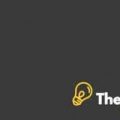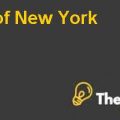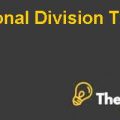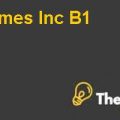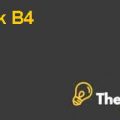
Coffee Wars in India: Café Coffee Day Takes on the Global Brands
Introduction and background:
Amalgamated Bean Coffee (ABC) that is popular as Café Coffee Day (CCD) was a privately held company. The founder established the company in India in 1996 with a reason to gradually incorporate the culture of coffee in the India. Café Coffee Day was formed by V.G. Siddhartha, who belonged to a rich family who was engaged in plantation of coffee beans and owned 350 acres of land in the hilly district of Karnataka. The place was also known as the land of coffee. The primary purpose of the founder was to bring the coffee culture in India that was recognized as a tea nation.
Café Coffee Day initially established its café on a stylish and full of Activity Street of Bangalore. After its successful opening in Bangalore, CCD opened its café in other cities of India as well. After many years of struggle and success, by April 2013, Café Coffee Day became a leader in the market by having a major share in the Indian coffee market. By 2013, CCD successfully established its 1469 cafes that include lounges and squares, 450 ground and fresh retail outlets, 1000 Xpress kiosks, and more than 22000 vending machines in more than 200 cities of India. In the same year, CCD became one of the major coffee exporters in India. In addition to that, the company successfully built its strong position in the market with approximate market share of 60% and became one of the most trusted brands in India.
It was a clear fact that Café Coffee Day had successfully built strong brand loyalty and brand position in India but recently, the aggressive entrance of Starbucks in India was an alarming signal for CCD because of the successful position and entrance of Starbucks in various countries of the world. Starbucks coffee company was founded by Howard Schultz, who bought Starbucks in 1987 for $3.8 million. It includes a coffee roasting facility along with six retail stores. By January 2012, Tata Global Beverages, world’s second largest branded tea company and Starbucks announced a joint venture that was based on a 50-50 partnership. Once the joint venture was formed, Starbucks worked with Tata Coffee to make a new blend of espresso roast for the Indian market. By October 2012, the Starbucks Company opened its first coffee store in India and by April 2013; Starbucks had 11 stores in India.
Current scenario:
The company is performing up to the mark until the aggressive entry by Starbucks, who entered in the Indian market with a bang. In the year 2013, the Starbucks coffee company opened its outlet in India in different famous and busy cities of India. The company makes a joint venture with the India’s local coffee company known as Tata to make its entrance more strong. As of now, the Starbucks Company has only opened 11 stores in the vast Indian market but the management of CCD needs to analyze the degree and level of competition faced by the global competitor. While CCD is a major player in the Indian market but Starbucks is a giant and a dominant player in the world. Competing and beating Starbucks in India will be the first test for Café Coffee Day.
Identification of Issues:
The major issue faced by Café Coffee Day was the aggressive entrance of Starbucks Coffee Company in the Indian market. The threat felt by CCD was because Starbucks was a dominant coffee player in the world and famous as one of the top quality retailers of coffee all over the world. Further, Starbucks was known to be a premium and best coffee maker and successfully built a strong position in the market along with strong brand image.
In response to this all these strengths of Starbucks, CCD needs to find a proper and wise approach to beat Starbucks in India. The management of the company needs to evaluate and analyze how they will respond to the entrance made by Starbucks in the Indian market. Further, the competition in India has become intense and fierce with the entrance of many international brands like Gloria Jeans, McDonald and others. Furthermore, Starbucks was a famous brand with positive brand image, therefore; most of the consumers were shifting to Starbucks.
Analysis:
Internal Analysis:
Strengths and Weaknesses of Café Coffee Day:
One of the major strengths of Café Coffee Day was its early entrance in the Indian market that gave it an early entrance advantage. Because of the early foundation in the Indian market, the Café Coffee Day had grabbed a market share of more than 60% and became the first preference of the Indian customers. The organization was totally integrated vertically, from its beans to the furniture in the cafes and lounges, in as much as a large portion of its rivals outsource the dominant part of their supply chains. It likewise offers excellent quality in its novel and in-house recipes, mixes and blends........................
This is just a sample partial case solution. Please place the order on the website to order your own originally done case solution.
This case is about Cafe Coffee Day's confrontation with Starbucks in India. Cafe Coffee Day (CCD) is thinking and deciding how to react to Starbucks entry into the Indian coffee market. The case study is about the coming of age of Cafe Coffee Day as the leading coffee store chain in India, with over 1,400 coffee shops/ cafes in India.
In 2013, Starbucks, the world's number 1 coffee chain company, inaugurated more than ten cafes in Indian cities with collaboration from Tata, and looked of a national level introduction. Cafe Coffee Day management was undecided if there was enough room for both Starbucks and Cafe Coffee Day in India's growing market, or whether Starbucks' entrance into this market required Cafe Coffee Day to react more aggressively ?
Coffee Wars In India: Cafe Coffee Day Takes On The Global Brands Harvard HBR Case Solution

